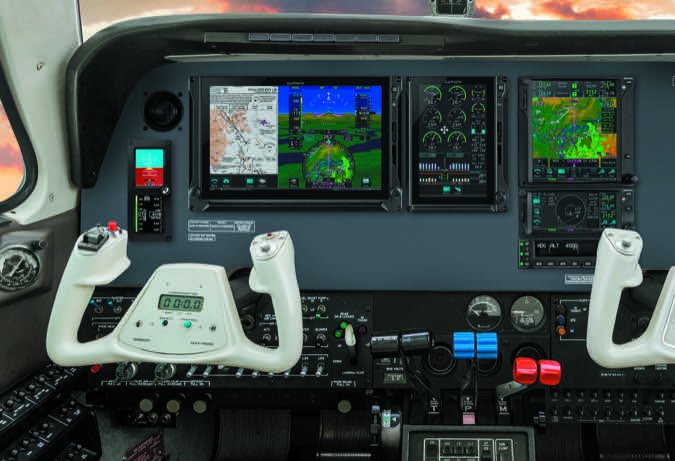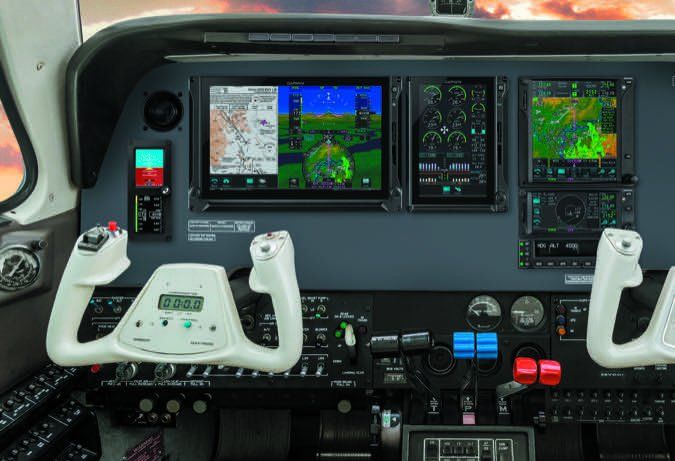No matter how you feel about Garmin’s market domination, you can’t argue that the company maintains the poll position by enthusiastically pumping out a steady stream of fresh products almost on a monthly basis. But Garmin also knows how to get the most mileage from its major systems and the G600/500 retrofit PFD/MFD was getting stale.

So when Garmin’s director of aftermarket sales, Jim Alpiser, introduced the company’s TXi series next-generation retrofit cockpit displays this past October, there was an obvious and genuine enthusiasm in his delivery. Rightfully so. These new TXi displays are a big deal. They pave a new road for Garmin for the next 10 years, replacing the aging G600/G500—the company’s first certified retrofit PFD released nearly nine years ago. The flagship TXi line isn’t a tweaked version of the old hardware and software, and it wasn’t born from other existing products; it’s a ground-up redesign. Smartly, and unlike the G500 and G600, the new TXi hardware closely resembles the GTN750/650 navigators and finally has a touchscreen interface, has optional engine monitoring, is available in multiple sizes and configurations and is compatible with G600/500 wiring.
Based on the presentation and a close look at the interface potential (I haven’t flown with the TXi yet—that’s in the works for an upcoming full report)—from a design standpoint I think the TXi line is positioned to be one of Garmin’s best-executed aviation products since the GNS430. But there’s one potential show-stealing elephant in the room, in my estimation: the price.
There have been rumors about a new display line from Garmin for some time and with high expectations. Moreover, the recent trend of cheaper displays (and autopilots) that trickle down from the experimental and LSA world had the market assuming Garmin would sell its new displays at, well, experimental prices. It got a taste of that with the G5 EFIS and GFC500 autopilot—two products with roots deep in the LSA and experimental market, but with an STC for installation in certified airplanes. The G5 is under $5000 and the GFC500 under $10,000.
My eyes and ears told me the market was expecting these new displays to be a derivative of the experimental GX3 Touch, but with a wide-reaching AML-STC. Not so. The TXi line is fully FAA-certified to a high standard. In fact, the new G700 TXi variant that’s intended for Part 23 applications (that’s the jet market) supports Level A software—the highest certification standard. My sense is the TXi’s certification effort (which commenced long before the FAA relaxed equipment standards for displays and autopilots) has a lot to do with its selling price. The entry-level G500 TXi system with a 7-inch display has a list price of $12,000 and options (including the $4000 engine display system) quickly drive the price northbound. The 10-inch display you see in the Baron pictured above starts at $15,000. I may be wrong, but I suspect some buyers expected pricing that’s at least one-third of this. I asked Alpiser why Garmin didn’t bring a lower-priced solution to market, as Dynon is doing with its experimental SkyView. While he didn’t dismiss the idea of such a product down the road, he suggested buyers will accept the price for a higher level of confidence in the TXi’s design standards.
I’m not so sure, but I agree with Alpiser who pointed out there’s no comparing the TXi’s design characteristics with non-certified products when it comes to materials, electrical shielding, lightning testing and a lot of other stuff that tags along with a stringent certification process. As Alpiser put it, “In avionics product development, the last 5 percent of effort to achieve the highest certification level is what costs the most money.” Many customers will moan and pay these costs, of course, and an aggressive dealer network will push the product hard, but the real test for Garmin will be the TXi’s sales volume in a shrinking retrofit market just getting used to lower prices and rising competition.


